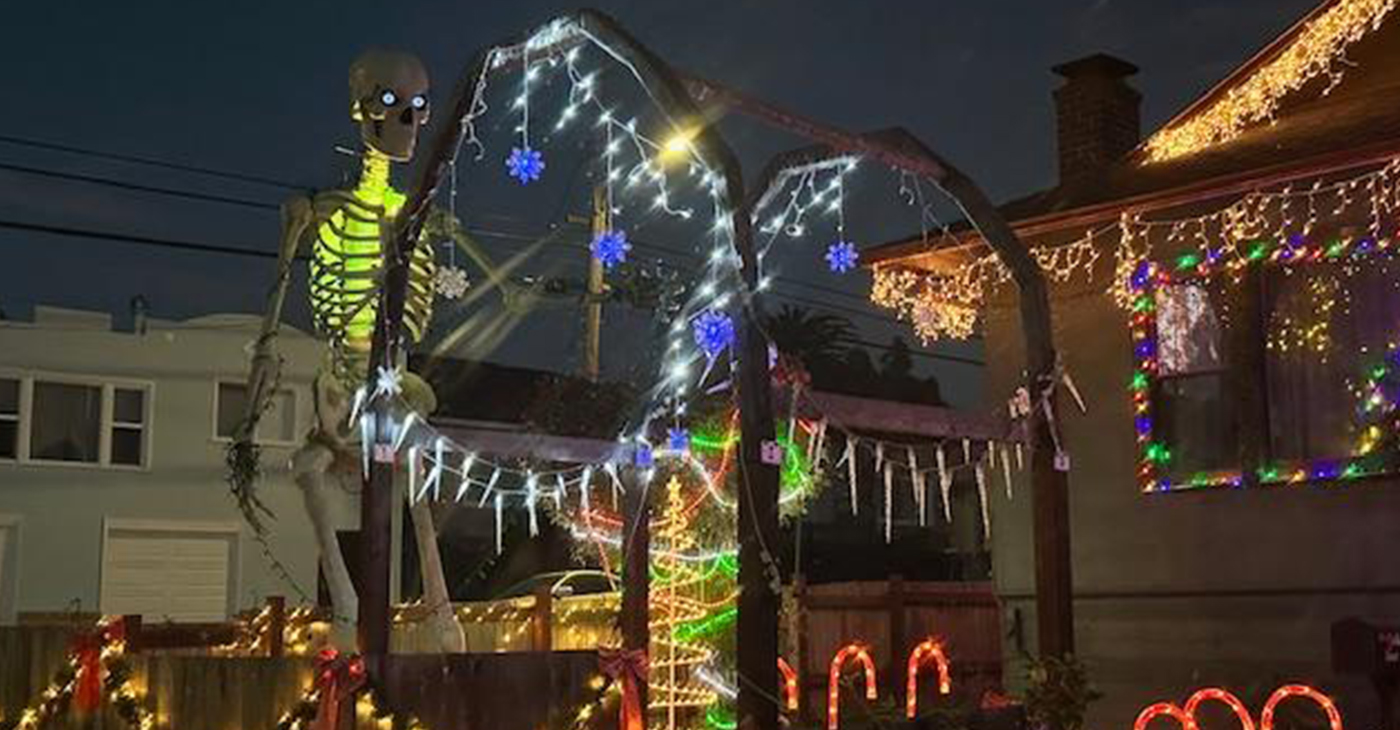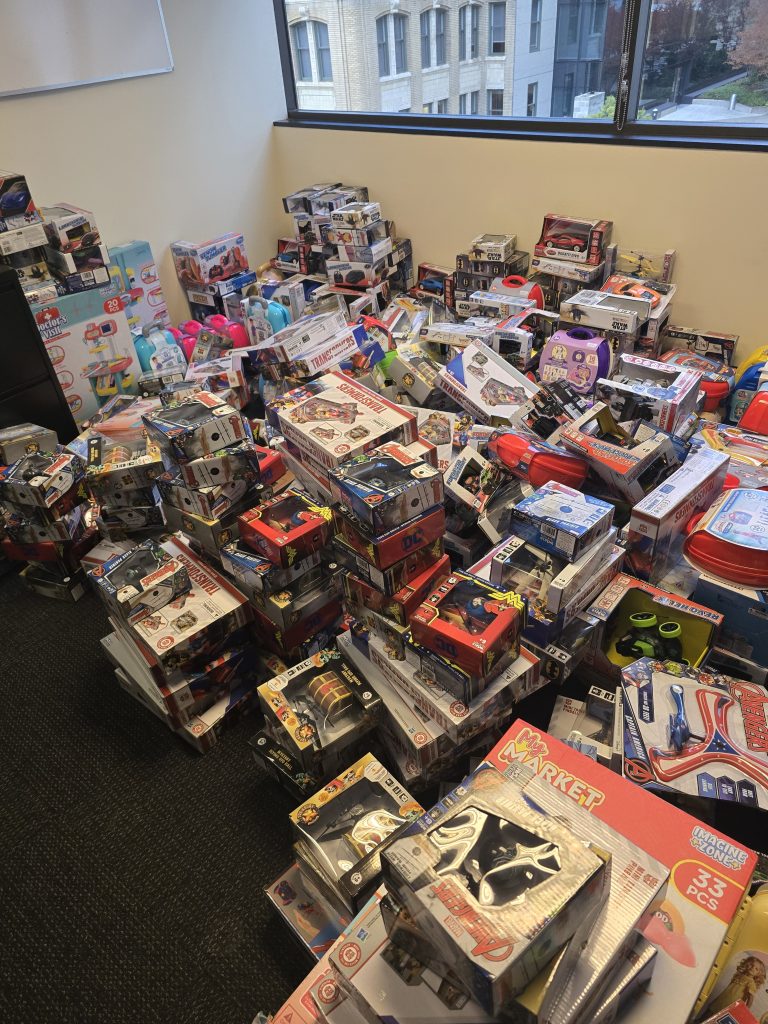Community
Supervisors delay decision on women’s jail for three weeks
WAVE NEWSPAPERS — The county’s plan to retrofit an immigration detention center in Lancaster as a women’s jail,seems likely to be abandoned in its current form.
LOS ANGELES — The county’s plan to retrofit an immigration detention center in Lancaster as a women’s jail, long opposed by criminal justice advocates, seems likely to be abandoned in its current form based on the lack of support from the Board of Supervisors Jan. 8.
A vote to approve a $215 million budget for Mira Loma Detention Center and award a design-build construction contract to San Fernando Valley-based Bernards Bros. Inc. was postponed at the request of Supervisor Sheila Kuehl.
The matter is set to come back before the board in three weeks, but Kuehl said she would not vote to build on the site — which is roughly 70 miles north of downtown Los Angeles — and Supervisor Hilda Solis said changes would need to be made to the plan before she would support it.
Funding for the project requires four votes from the five-member Board of Supervisors.
“The location of the proposed women’s jail at Mira Loma poses significant, and in my opinion, insurmountable obstacles to our goal of creating a women’s jail that is the centerpiece of a gender-responsive corrections system,” Kuehl said Jan. 7. “Mira Loma is too far away from the home communities of the women who would be housed there, and too far away from family members who would need to visit.”
Solis said she is committed to finding strategies that encourage family reunification and lower recidivism rates, but stopped short of saying she would never support a plan to build in Lancaster.
“L.A. County should be on the forefront of diversion and rehabilitation, rather than punishment than incarceration,” Solis said.
The board approved the project in concept in 2015, though Solis abstained from the vote and both she and Kuehl called then for strategies to overcome the challenges posed by the facility’s location.
The JusticeLA Coalition declared victory as members stood outside the Kenneth Hahn Hall of Administration in orange T-shirts with the slogan “can’t get well in a cell” emblazoned on the back.
“We can finally claim this victory after seven years,” Eunisses Hernandez of JusticeLA said, drawing cheers.
Coalition speakers urged the board to invest in community resources that could reduce the numbers of arrests and jail time by treating mental illness, providing jobs and educating young people.
Supervisor Janice Hahn, who chairs the board, said the decision to delay a vote and rethink the jail plan was made by the board as a whole.
“It was a collective will to put the brakes on, to take a step back and to pause,” Hahn said. “There is a new sheriff in town who also has some ideas. … He also would like to weigh in.”
Sheriff Alex Villanueva has talked about reducing the jail population and finding alternatives to incarceration and many advocates of reform see him as a potential ally.
“We have a sheriff who does not want to build and that is unprecedented,” Mark-Anthony Johnson of Dignity & Power Now told the board, after thanking them for “challenging the conventional wisdom that this was just a done deal.”
Villanueva is working on alternatives to discuss with the board, Sheriff’s Department spokeswoman Nicole Nishida told City News Service.
But it’s not clear whether the board and the sheriff are willing to go as far as criminal justice advocates would like. For activists, it isn’t simply a question of where the jail is built.
“The ask is not for a better women’s jail, it’s for meaningful and real alternatives to incarceration,” said community activist Kristina Lear. “I’m not asking for a relocation, I’m asking for a halt to it.”
Esther Lim of the American Civil Liberties Union of Southern California said the county didn’t do enough front-end analysis on who needs to be jailed versus who needs diversion and treatment, pointing out that one of the most detailed studies behind the jails plan was provided by a construction management firm.
It’s time to “reexamine what criminal justice looks like here in Los Angeles,” Lim told City News Service.
Before the board, Lim pointed out that Mira Loma is not the only jail slated for construction.
The proposed Consolidated Correctional Treatment Facility “is a mistake that will cost us billions of dollars,” Lim said.
A $2.2 billion Consolidated Correctional Treatment Facility is planned to replace the crowded, decrepit Men’s Central Jail and provide better treatment and more humane conditions for the roughly one-third of inmates who have mental health issues.
The county Department of Public Works had recommended increasing the Consolidated Correctional Treatment Facility budget by roughly $30 million and awarding a contract to McCarthy Building Companies Inc. A vote on that item was also postponed for three weeks at the department’s request.
“If you’re going to take Mira Loma off the table, we need to look at the entire jail plan,” Supervisor Kathryn Barger told her colleagues.
Lancaster is in the district she represents, but Barger said she had no issue with choosing another location for a women’s jail in downtown Los Angeles or elsewhere.
As for the existing Lancaster detention center, “I’d love to flatten it and put in affordable housing tomorrow,” Barger said.
But she also warned the board that $100 million in state funding for the project was at stake.
The county has also spent roughly $8 million on planning for the Mira Loma project, according to a Department of Public Works spokesman.
While everyone on the board agreed with the need to rethink the plan, at least with regard to Mira Loma, no one offered a specific alternative.
Supervisor Mark Ridley-Thomas reminded his colleagues that one of the reasons for updating the county jail system is to comply with Department of Justice concerns about the treatment of suicidal and mentally ill inmates.
“This discussion is at least 15 years old. Four governors later, 10 members of the Board of Supervisors later … we have yet to land,” Ridley-Thomas said. “What then are we prepared to construct?”
Even Kuehl, who was willing to take the strongest stance against Mira Loma, maintained her support for the men’s jail project, saying it would improve the treatment and rehabilitation of mentally ill jail inmates.
But Lim and other advocates argued that most of those inmates are behind bars for non-violent offenses and could be diverted into community-based programs where they would have a better chance of leading productive lives.
Johnson estimated that the county could divert about 10,000 individuals annually into community programs rather than jailing them and said the vast majority of the county’s diversion programs had not yet been implemented.
To date, the county has diverted roughly 2,500 offenders through its Office of Diversion and Reentry.
This article originally appeared in the Wave Newspapers.
Activism
Oakland Post: Week of December 24 – 30, 2025
The printed Weekly Edition of the Oakland Post: Week of – December 24 – 30, 2025

To enlarge your view of this issue, use the slider, magnifying glass icon or full page icon in the lower right corner of the browser window.
Alameda County
Bling It On: Holiday Lights Brighten Dark Nights All Around the Bay
On the block where I grew up in the 1960s, it was an unwritten agreement among the owners of those row homes to put up holiday lights: around the front window and door, along the porch banister, etc. Some put the Christmas tree in the window, and you could see it through the open slats of the blinds.

By Wanda Ravernell
I have always liked Christmas lights.
From my desk at my front window, I feel a quiet joy when the lights on the house across the street come on just as night falls.
On the block where I grew up in the 1960s, it was an unwritten agreement among the owners of those row homes to put up holiday lights: around the front window and door, along the porch banister, etc. Some put the Christmas tree in the window, and you could see it through the open slats of the blinds.
My father, the renegade of the block, made no effort with lights, so my mother hung a wreath with two bells in the window. Just enough to let you know someone was at home.
Two doors down was a different story. Mr. King, the overachiever of the block, went all out for Christmas: The tree in the window, the lights along the roof and a Santa on his sleigh on the porch roof.
There are a few ‘Mr. Kings’ in my neighborhood.
In particular is the gentleman down the street. For Halloween, they erected a 10-foot skeleton in the yard, placed ‘shrunken heads’ on fence poles, pumpkins on steps and swooping bat wings from the porch roof. They have not held back for Christmas.
The skeleton stayed up this year, this time swathed in lights, as is every other inch of the house front. It is a light show that rivals the one in the old Wanamaker’s department store in Philadelphia.
I would hate to see their light bill…
As the shortest day of the year approaches, make Mr. King’s spirit happy and get out and see the lights in your own neighborhood, shopping plazas and merchant areas.
Here are some places recommended by 510 Families and Johnny FunCheap.
Oakland
Oakland’s Temple Hill Holiday Lights and Gardens is the place to go for a drive-by or a leisurely stroll for a religious holiday experience. Wear a jacket, because it’s chilly outside the Church of Jesus Christ of Latter-day Saints, at 4220 Lincoln Ave., particularly after dark. The gardens are open all day from 9 a.m. to 9 p.m. with the lights on from dusk until closing.
Alameda
Just across the High Street Bridge from Oakland, you’ll find Christmas Tree Lane in Alameda.
On Thompson Avenue between High Street and Fernside drive, displays range from classic trees and blow-ups to a comedic response to the film “The Nightmare Before Christmas.” Lights turn on at dusk and can be seen through the first week in January.
Berkeley
The Fourth Street business district from University Avenue to Virginia Street in Berkeley comes alive with lights beginning at 5 p.m. through Jan. 1, 2026.
There’s also a display at one house at 928 Arlington St., and, for children, the Tilden Park Carousel Winter Wonderland runs through Jan. 4, 2026. Closed Christmas Day. For more information and tickets, call (510) 559-1004.
Richmond
The Sundar Shadi Holiday Display, featuring a recreation of the town of Bethlehem with life-size figures, is open through Dec. 26 at 7501 Moeser Lane in El Cerrito.
Marin County
In Marin, the go-to spot for ‘oohs and ahhs’ is the Holiday Light Spectacular from 4-9 p.m. through Jan. 4, 2026, at Marin Center Fairgrounds at 10 Ave of the Flags in San Rafael through Jan. 4. Displays dazzle, with lighted walkways and activities almost daily. For more info, go to: www.marincounty.gov/departments/cultural-services/department-sponsored-events/holiday-light-spectacular
The arches at Marin County Civic Center at 3501 Civic Center Dr. will also be illuminated nightly.
San Francisco
Look for light installations in Golden Gate Park, chocolate and cheer at Ghirardelli Square, and downtown, the ice rink in Union Square and the holiday tree in Civic Center Plaza are enchanting spots day and night. For neighborhoods, you can’t beat the streets in Noe Valley, Pacific Heights, and Bernal Heights. For glee and over-the-top glitz there’s the Castro, particularly at 68 Castro Street.
Livermore
The winner of the 2024 Great Light Flight award, Deacon Dave has set up his display with a group of creative volunteers at 352 Hillcrest Avenue since 1982. See it through Jan. 1, 2026. For more info, go to https://www.casadelpomba.com
Fremont
Crippsmas Place is a community of over 90 decorated homes with candy canes passed out nightly through Dec. 31. A tradition since 1967, the event features visits by Mr. and Mrs. Claus on Dec. 18 and Dec. 23 and entertainment by the Tri-M Honor Society at 6 p.m. on Dec. 22. Chrippsmas Place is located on: Cripps Place, Asquith Place, Nicolet Court, Wellington Place, Perkins Street, and the stretch of Nicolet Avenue between Gibraltar Drive and Perkins Street.
Activism
Lu Lu’s House is Not Just Toying Around with the Community
Wilson and Lambert will be partnering with Mayor Barbara Lee on a toy giveaway on Dec. 20. Young people, like Dremont Wilkes, age 15, will help give away toys and encourage young people to stay in school and out of trouble. Wilkes wants to go to college and become a specialist in financial aid. Sports agent Aaron Goodwin has committed to giving all eight young people from Lu Lu’s House a fully paid free ride to college, provided they keep a 3.0 grade point average and continue the program. Lu Lu’s House is not toying around.

Special to the Post
Lu Lu’s House is a 501c3 organization based in Oakland, founded by Mr. Zirl Wilson and Mr. Tracy Lambert, both previously incarcerated. After their release from jail, they wanted to change things for the better in the community — and wow, have they done that!
The duo developed housing for previously incarcerated people, calling it “Lu Lu’s House,” after Wilson’s wonderful wife. At a time when many young people were robbing, looting, and involved in shootings, Wilson and Lambert took it upon themselves to risk their lives to engage young gang members and teach them about nonviolence, safety, cleanliness, business, education, and the importance of health and longevity.
Lambert sold hats and T-shirts at the Eastmont Mall and was visited by his friend Wilson. At the mall, they witnessed gangs of young people running into the stores, stealing whatever they could get their hands on and then rushing out. Wilson tried to stop them after numerous robberies and finally called the police, who Wilson said, “did not respond.” Having been incarcerated previously, they realized that if the young people were allowed to continue to rob the stores, they could receive multiple criminal counts, which would take their case from misdemeanors to felonies, resulting in incarceration.

Lu Lu’s House traveled to Los Angeles and obtained more than 500 toys
for a Dec. 20 giveaway in partnership with Oakland Mayor Barbara
Lee. Courtesy Oakland Private Industry,
Wilson took it upon himself to follow the young people home and when he arrived at their subsidized homes, he realized the importance of trying to save the young people from violence, drug addiction, lack of self-worth, and incarceration — as well as their families from losing subsidized housing. Lambert and Wilson explained to the young men and women, ages 13-17, that there were positive options which might allow them to make money legally and stay out of jail. Wilson and Lambert decided to teach them how to wash cars and they opened a car wash in East Oakland. Oakland’s Initiative, “Keep the town clean,” involved the young people from Lu Lu’s House participating in more than eight cleanup sessions throughout Oakland. To assist with their infrastructure, Lu Lu’s House has partnered with Oakland’s Private Industry Council.
For the Christmas season, Lu Lu’s House and reformed young people (who were previously robbed) will continue to give back.
Lu Lu’s House traveled to Los Angeles and obtained more than 500 toys.
Wilson and Lambert will be partnering with Mayor Barbara Lee on a toy giveaway on Dec. 20. Young people, like Dremont Wilkes, age 15, will help give away toys and encourage young people to stay in school and out of trouble. Wilkes wants to go to college and become a specialist in financial aid. Sports agent Aaron Goodwin has committed to giving all eight young people from Lu Lu’s House a fully paid free ride to college, provided they keep a 3.0 grade point average and continue the program. Lu Lu’s House is not toying around.
-

 #NNPA BlackPress4 weeks ago
#NNPA BlackPress4 weeks agoLIHEAP Funds Released After Weeks of Delay as States and the District Rush to Protect Households from the Cold
-

 Activism4 weeks ago
Activism4 weeks agoOakland Post: Week of November 26 – December 2, 2025
-

 Alameda County3 weeks ago
Alameda County3 weeks agoSeth Curry Makes Impressive Debut with the Golden State Warriors
-

 #NNPA BlackPress4 weeks ago
#NNPA BlackPress4 weeks agoSeven Steps to Help Your Child Build Meaningful Connections
-

 #NNPA BlackPress4 weeks ago
#NNPA BlackPress4 weeks agoSeven Steps to Help Your Child Build Meaningful Connections
-

 #NNPA BlackPress4 weeks ago
#NNPA BlackPress4 weeks agoTrinidad and Tobago – Prime Minister Confirms U.S. Marines Working on Tobago Radar System
-

 #NNPA BlackPress4 weeks ago
#NNPA BlackPress4 weeks agoThanksgiving Celebrated Across the Tri-State
-

 #NNPA BlackPress4 weeks ago
#NNPA BlackPress4 weeks agoTeens Reject Today’s News as Trump Intensifies His Assault on the Press























































